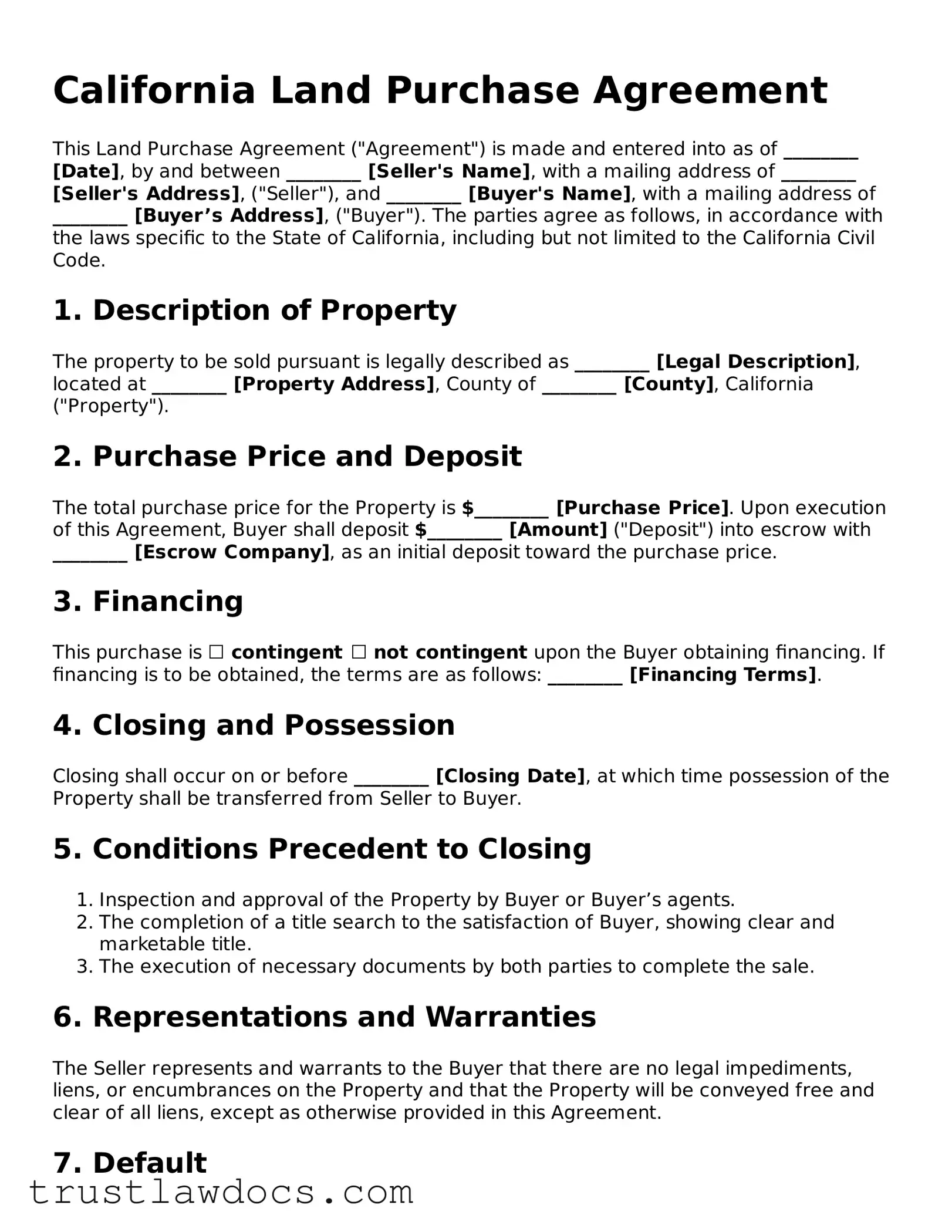California Land Purchase Agreement
This Land Purchase Agreement ("Agreement") is made and entered into as of ________ [Date], by and between ________ [Seller's Name], with a mailing address of ________ [Seller's Address], ("Seller"), and ________ [Buyer's Name], with a mailing address of ________ [Buyer’s Address], ("Buyer"). The parties agree as follows, in accordance with the laws specific to the State of California, including but not limited to the California Civil Code.
1. Description of Property
The property to be sold pursuant is legally described as ________ [Legal Description], located at ________ [Property Address], County of ________ [County], California ("Property").
2. Purchase Price and Deposit
The total purchase price for the Property is $________ [Purchase Price]. Upon execution of this Agreement, Buyer shall deposit $________ [Amount] ("Deposit") into escrow with ________ [Escrow Company], as an initial deposit toward the purchase price.
3. Financing
This purchase is ☐ contingent ☐ not contingent upon the Buyer obtaining financing. If financing is to be obtained, the terms are as follows: ________ [Financing Terms].
4. Closing and Possession
Closing shall occur on or before ________ [Closing Date], at which time possession of the Property shall be transferred from Seller to Buyer.
5. Conditions Precedent to Closing
- Inspection and approval of the Property by Buyer or Buyer’s agents.
- The completion of a title search to the satisfaction of Buyer, showing clear and marketable title.
- The execution of necessary documents by both parties to complete the sale.
6. Representations and Warranties
The Seller represents and warrants to the Buyer that there are no legal impediments, liens, or encumbrances on the Property and that the Property will be conveyed free and clear of all liens, except as otherwise provided in this Agreement.
7. Default
If either party fails to comply with the terms of this Agreement, the non-compliant party shall be in default. The aggrieved party shall have the right to seek all available legal remedies, including but not limited to specific performance or termination of this Agreement.
8. Governing Law
This Agreement shall be governed and construed in accordance with the laws of the State of California.
9. Entire Agreement
This document, along with any attached exhibits or addenda, constitutes the entire Agreement between Seller and Buyer concerning the purchase of the described Property. Any modifications to this Agreement must be made in writing and signed by both parties.
IN WITNESS WHEREOF, the parties hereto have executed this Agreement as of the date first above written.
Seller's Signature: ________ [Seller's Signature]
Buyer's Signature: ________ [Buyer's Signature]
Date: ________ [Date]
